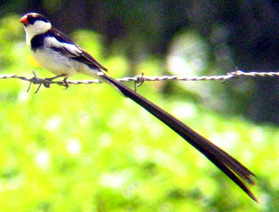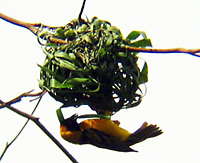Earth & Environmental Science Journalism:
Science Research Project
How is avian diversity distributed across the heterogeneous landscape of a farming-village in western Kenya?
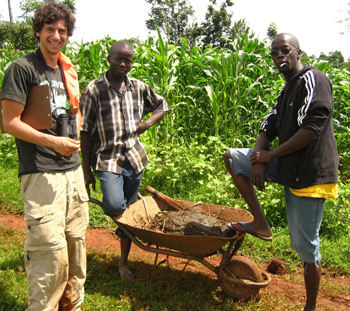 |
Justin is pictured with Churchil and Ken Oriko (left to right) in front of Ken and Churchil's maize field. Churchil is an agriculture student who is working to educate local residents about sustainable growing practices (photo credit - Kennedy Kandira)
|
Justin Nobel
Justin documented his science master's research through a series of communications which became a four part web series for the Earth Institute News of Columbia University. These articles chronicle his study and his experiences in Sauri, Kenya.
Abstract
Natural landscapes are being rapidly transformed for human use (Daily 2001, Tscharntke 2005, Vandermeer 1997, Vitousek 1997). The issue is especially pertinent in the tropics, where swelling populations and inadequate cropland have led to the clearing of forests and wetlands in order to make room for agriculture (Estrada 1997, Daily 2001, Dixon 2005, Sachs 2005). Studying these human-dominated ecosystems is essential in understanding the world we continue to shape (Petit 2003, Daily 2001, Bawa 2004). Sauri, a farming village in western Kenya, provides an especially interesting opportunity to assess biodiversity in a human-dominated landscape. The Millennium Villages Project (MVP) will provide agricultural and health-related inputs to a dozen villages across sub-Saharan Africa over the next several years in the hopes of ending extreme poverty and sparking economic development. One tenet of the project calls for development to occur in a manner that is environmentally sustainable, implying that preserving natural habitat, reducing groundwater contamination and preventing biodiversity loss are all grave concerns (MVP Annual Report 2005). Avian diversity is of particular interest as birds play critical roles in agroecosystems (Tremblay 2001), yet little is known about the avian fauna of agricultural landscapes in Africa (Soderstrom 2003). From May 15th through June 24th 2006, 20-minute point counts of avian species were carried out on 39 plots in order to better understand the avian assemblage of this predominantly agricultural landscape. We found that wetlands tended to hold a larger proportion of the less commonly encountered species. Contrary to initial assumptions, plots with hedges actually exhibited less avian diversity than those without. The study also served as a means of inspecting avian functional diversity, including feeding guild and habitat preference, as well as serving as a model for future ecological studies in Sauri and other Millennium Villages.
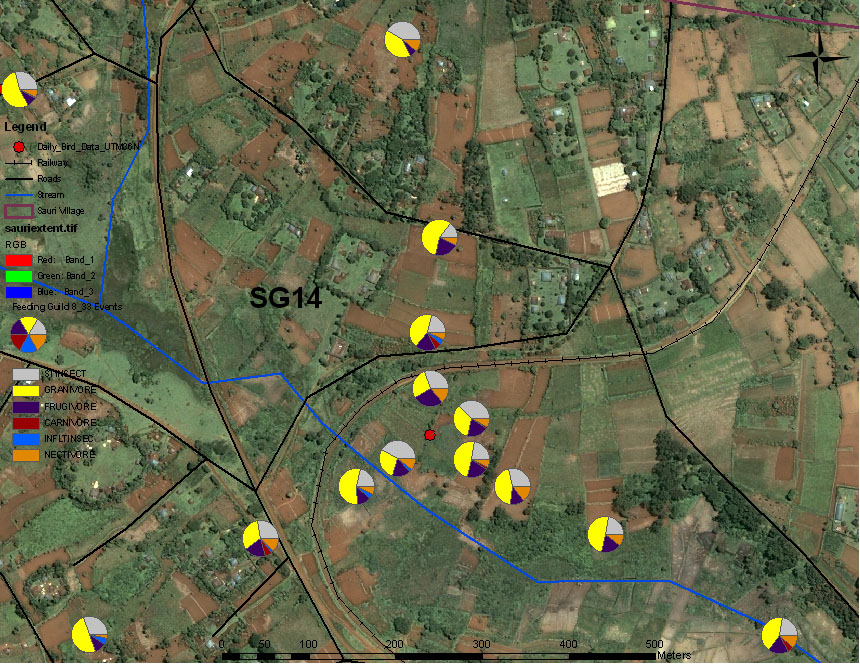
Total Bird Sightings by Feeding Guild.
The proportion of total birds seen on one transect (Y transect SG 14) as classified by bird’s feeding guild as either stationary insectivore, in-flight insectivore (grey), granivore (yellow), frugivore (purple), carnivore (red), or nectivore (orange) species. Values were compiled from all 3 rounds of surveying.
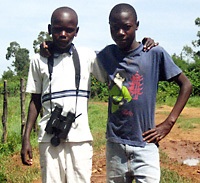 |
Brother Kevin Odhiambo, 13, and William Ochieng, 14, are residents of a village near Sauri and were Justin's field research guides. (photo by Justin Nobel)
|
Go to Science Research Projects.
Go to Learning Objectives of Research Project.
Return to E&ESJ home page.
Last updated: 19 January 2006, MKT.


